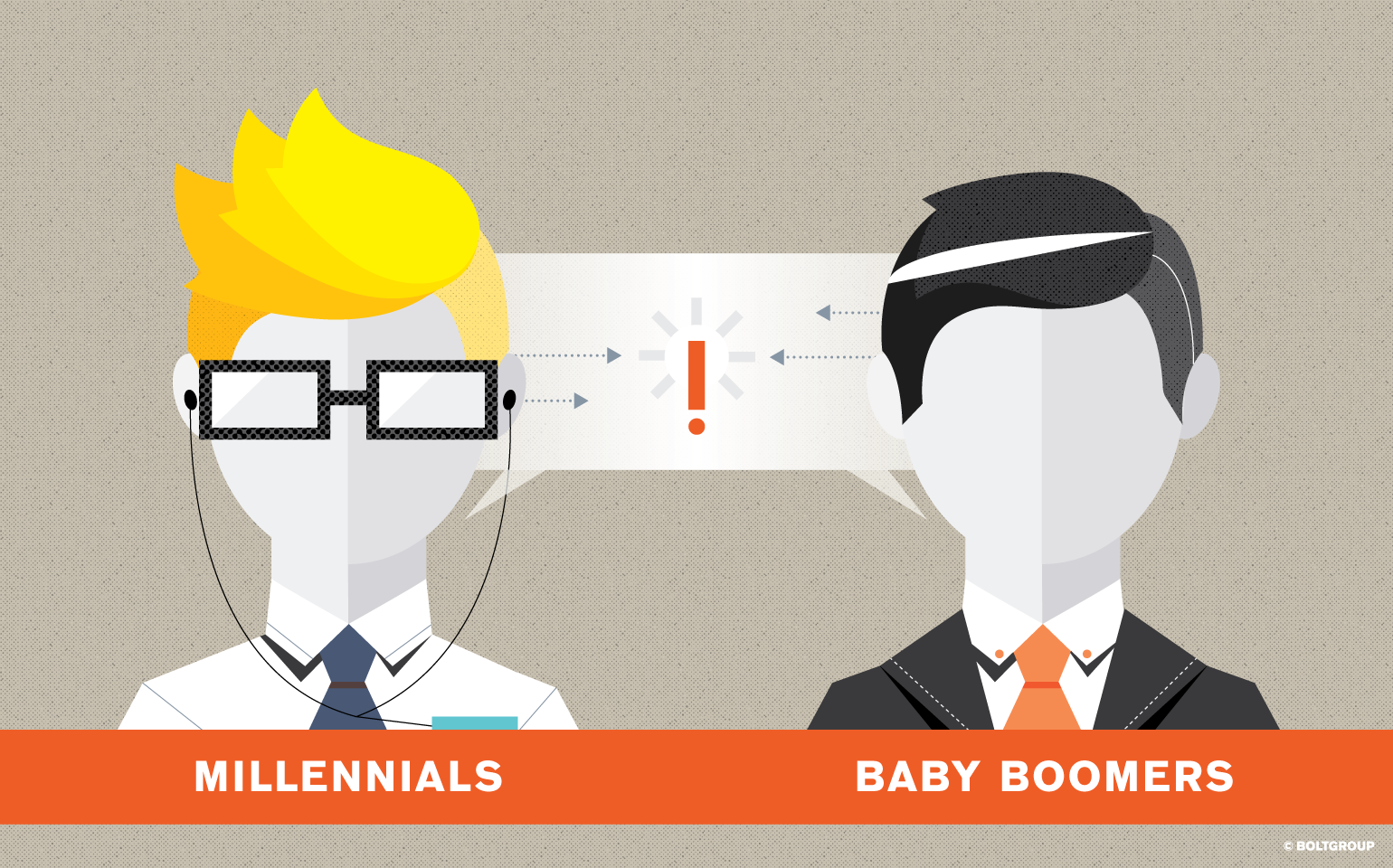Are Millennials and Baby Boomers so different that companies must design separately for them?
Wouldn’t it be great that if these two demographics had enough in common that companies could design products to meet the needs of both—one big target market. According to a June 2015 report from the U.S. Census Bureau, Millennials, Americans born between 1982 and 2000, number 83 million, and have replaced Baby Boomers as the largest population segment in the country.
In many ways Baby Boomers and Millennials are more alike than you might think. Consider these 10 commonalities:
- Both want to contribute to society through their work.
- Both seek flexible working arrangements.
- Both value loyalty to the company they serve.
- Both prize other rewards of employment over financial compensation.
- Both want quality goods. Boomers want stuff to last the rest of their lives. Millennials want things that will last a long time.
- Millennials want a smaller home, quality items, and authenticity. Boomers want to downsize to housing that is low maintenance, ergonomic, and sustainable. This is one reason that inner city apartments and condos are booming.
- Both are interested in cultural activities and services within walking distance.
- In an office environment, Millennials and Boomers make surprisingly good teammates. Both bring their own energy to a project, Millennials with potential, Boomers with experience. Millennials haven’t had time to learn from experience, but are able to work incredibly hard when they’re motivated to do so—intense focus and long hours. Boomers have spent decades learning, their brains are wired now for what works and what doesn’t, so they achieve results without such long hours.
- Millennials want to see the world become a better place for themselves and their future families. Boomers want to see the world become a better place for their kids and grandkids.
- Both recognize and appreciate good design.
Industries that have a broad customer profile and target all age groups can realize substantial benefits from applying design principles to reach Millennials and Boomers. Products and services that include older generations, but don’t exclude younger generations, have a high value for society and, therefore, for companies.
OXO is one successful example of this. More than 25 years ago, Sam Farber noticed his wife Betsey was struggling with her apple peeler because of her arthritis. This led Sam to develop a line of thoughtful cooking tools, “Good Grips,” that would benefit all users. While Farber’s OXO products were more expensive than competitors’ tools, they provided unique benefits in an easier-to-use kitchen utensil for which customers were willing to pay more.
Initially, 15 OXO Good Grips kitchen tools were introduced to the U.S. market. The ergonomically designed, transgenerational tools set a new industry standard, and raised the bar of consumer expectation and performance. Today, OXO has more than 1,000 products that cover multiple areas of the home, all of them feature thoughtful design, innovative features, comfort, and reliability. OXO products have won numerous design awards and can be found in museums worldwide.
By combining common benefits and great design in industries with broad market appeal, companies can reach Millennial and Boomer markets with great success and cost efficiency.
